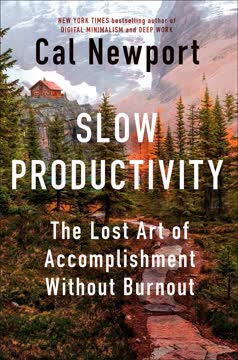Key Takeaways
1. Asking for help is harder than it seems, but necessary for success.
Although the idea of asking for even a small amount of help makes most of us horribly uncomfortable, the truth about modern work is that we rely, more than ever, on the cooperation and support of others.
Reluctance to ask. Many people find it difficult to ask for help, experiencing feelings of shyness or inadequacy. This reluctance can stem from a fear of imposing on others or appearing incompetent. However, in today's collaborative work environments, seeking assistance is often essential for achieving goals and maximizing productivity.
Interdependence in modern work. Cross-functional teams, agile project management, and matrixed organizational structures require frequent collaboration and mutual support. No one succeeds in a vacuum, and even leaders need to elicit helpful behavior from their teams. Overcoming the discomfort of asking for help is crucial for navigating these interdependent relationships.
Consequences of not asking. When individuals avoid seeking help, they may miss out on valuable resources, expertise, and support. This can lead to delays, errors, and ultimately, reduced performance. Recognizing the importance of seeking help and developing effective strategies for doing so is essential for personal and professional success.
2. People are more willing to help than you think.
In other words, other people are roughly twice as likely to want to be helpful as we think they are.
Underestimating compliance. Research shows that people consistently underestimate how likely others are to comply with a direct request for help. This "underestimation-of-help effect" can be attributed to a failure of perspective-taking, where help-seekers focus solely on the burden of the request without considering the potential helper's motivations.
The cost of saying no. Potential helpers often experience psychological discomfort when turning down a request, including feelings of embarrassment, guilt, or shame. This interpersonal pressure to comply is often more salient to the help-giver than the help-seeker. Face-to-face requests are particularly effective because they amplify the awkwardness of saying no.
Motivation = Expectancy x Value. Motivation to ask for help depends on the likelihood of receiving it and the quality of assistance expected. Since we underestimate both, our motivation to ask is lower than it should be. Overcoming this miscalculation can empower individuals to seek the support they need and achieve their goals.
3. Asking for help can actually make you more likable.
Helpers, on the other hand, are remarkably consistent. They tend to like the people whom they help more, not less, after helping them.
Cognitive dissonance. People experience cognitive dissonance when they hold conflicting beliefs or attitudes. Helping someone they dislike creates dissonance, which they resolve by adjusting their attitude and liking the person more. This phenomenon, known as the "Benjamin Franklin effect," suggests that doing a favor for someone can increase their fondness for you.
Jecker and Landy study. A study where participants who were asked by a cold experimenter to return money they "won" liked the experimenter more than those who weren't asked for the favor. The more money participants gave back, the more they liked him.
Giving feels good. Helping others boosts mood, reduces stress, and increases life satisfaction. By asking for help, you're giving someone the opportunity to experience these positive emotions. This can strengthen your relationship and create a sense of goodwill.
4. The paradox of help: People hate feeling obligated.
There’s an inherent paradox in asking someone for their help: while help freely and enthusiastically given makes the helper feel good, researchers have found that the emotional benefits of providing help to others disappear when people feel controlled.
Autonomy vs. control. People derive satisfaction from helping when they feel a sense of autonomy and choice. When they feel controlled or obligated, the emotional benefits of helping diminish. This creates a paradox: how can you ask for help without making someone feel compelled to give it?
The "Can you do me a favor?" trap. Asking someone to pre-commit to a favor before revealing the request can increase compliance but also lead to resentment. People who feel trapped may demand more compensation for their trouble. This highlights the importance of avoiding manipulative tactics and respecting the potential helper's autonomy.
Reciprocity and its limits. While reciprocity is a powerful social norm, it can also create a sense of obligation. People may feel pressured to reciprocate, even if they don't genuinely want to help. To avoid this, focus on building genuine relationships based on mutual support and respect, rather than explicit quid pro quo exchanges.
5. Four steps to successfully getting help.
You have to make sure other people notice what is happening.
Overcoming obstacles. To successfully obtain help, you must overcome several obstacles:
- Step 1: The helper needs to notice that you might need help.
- Step 2: The helper needs to believe that you desire help.
- Step 3: The helper needs to take responsibility for helping.
- Step 4: The helper needs to be able to provide the help you need.
Inattentional blindness and audience inhibition. People are often preoccupied with their own affairs and may not notice your need for help. Even if they do, they may fear misinterpreting the situation or offering unwanted assistance. To overcome these obstacles, make your need clear and ask for help directly.
Diffusion of responsibility and competing commitments. The more people who could help, the less clear it is who should help. Also, potential helpers may be busy or have other commitments. To address these challenges, ask individuals directly, be specific about your needs, and be open to receiving help that is different from what you initially requested.
6. Avoid making the request weird.
Asking for help is tricky because it isn’t just about what you say and do. It’s also about what you don’t say or do.
Overdoing empathy. While empathy can be a powerful motivator, overdoing it can backfire. Excessive displays of emotion or attempts to elicit sympathy can make people uncomfortable and less likely to help.
Common mistakes. Apologizing profusely, using disclaimers, minimizing the request, and reminding people that they owe you a favor are all common ways to make a request awkward. These tactics can undermine the helper's sense of autonomy and reduce their motivation to assist.
Focus on the helper. Instead of focusing on your own discomfort or needs, emphasize the positive aspects of helping. Highlight the helper's skills, expertise, and the potential impact of their assistance. This can make the request more appealing and increase the likelihood of a positive response.
7. Create a culture of helpfulness by fostering a sense of "us."
Human beings are simply wired to help their own tribe.
In-group bias. People are naturally inclined to help members of their own group. This "in-group bias" can be leveraged to foster a culture of helpfulness within teams and organizations. By emphasizing shared goals, values, and experiences, you can create a stronger sense of connection and encourage mutual support.
Minimal group paradigm. Even arbitrary distinctions can create a sense of in-group identity. Highlighting commonalities, such as shared interests or alma maters, can increase feelings of connection and willingness to help.
Practical strategies. Use inclusive language like "we" and "us," highlight shared goals and values, and encourage team-building activities that foster camaraderie. By creating a strong sense of "us," you can cultivate a culture of helpfulness and collaboration.
8. Highlight positive identities to encourage helping.
Most people see themselves (rightly or wrongly) as helpful, because being helpful is part of what it means to be a good person.
Identity and self-esteem. People are motivated to act in ways that are consistent with their self-image and that enhance their self-esteem. By framing requests for help in a way that aligns with the helper's positive identity, you can increase their motivation to assist.
The "be a helper" effect. Research shows that framing requests in terms of being a "helper" or "generous donor" can be more effective than simply asking for help or a donation. This taps into people's desire to see themselves as kind, compassionate, and helpful individuals.
Tailoring the message. To maximize positive identity reinforcement, tailor your message to the helper's values and beliefs. Understand what matters to them and frame your request in a way that resonates with their personal sense of identity.
9. Show helpers the impact of their assistance.
We want to affect the world around us, to have an impact, even if only a small one.
The need for effectiveness. People are motivated to help when they believe their efforts will make a difference. Providing clear and tangible evidence of the impact of their assistance is crucial for sustaining their motivation and reaping the psychological rewards of helping.
Concrete vs. abstract appeals. Concrete appeals that highlight the specific beneficiaries and outcomes of helping are more effective than abstract appeals that lack detail. People want to know who they are helping and how their assistance will make a difference.
Follow-up and feedback. After receiving help, provide feedback to the helper about the impact of their assistance. Let them know how their efforts contributed to your success and express your gratitude for their support. This reinforces their sense of effectiveness and makes them more likely to help again in the future.
Last updated:
Review Summary
Reinforcements received mostly positive reviews, with readers praising its insightful examination of asking for help. Many found the book well-written, evidence-based, and practical. Reviewers appreciated the author's clear writing style and the book's concise format. Some readers noted valuable strategies for creating a culture of helpfulness in organizations. A few critics found the book superficial or unhelpful. Overall, readers felt the book offered useful insights into the psychology of asking for and receiving help, with many recommending it as a worthwhile read.
Similar Books










Download PDF
Download EPUB
.epub digital book format is ideal for reading ebooks on phones, tablets, and e-readers.




